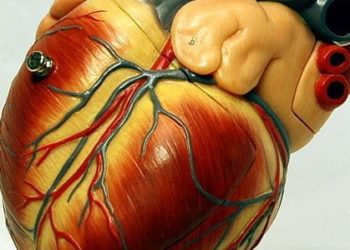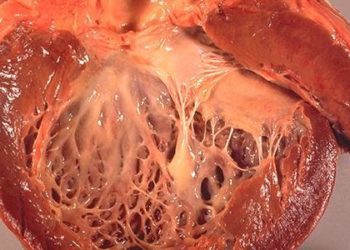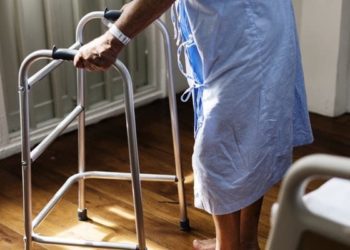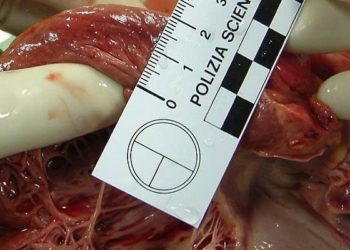2 Minute Medicine Rewind February 20, 2023
Antipsychotic Medication Use Among Older Adults Following Infection-Related Hospitalization
1. In patients with newly initiated antipsychotic medications following infection-related hospitalization, discontinuation rates were lower among atypical antipsychotic users compared to haloperidol users.
Evidence Rating Level: 2 (Good)
Delirium, characterized by an acute change in mental status and cognition, presents a significant health care burden. In a hospital setting, delirium is often associated with increased mortality, functional decline, and a prolonged admission. Infection is frequently an underlying cause for delirium onset. Antipsychotic medications are commonly prescribed to manage any behavioral concerns that may arise from delirium; however, these agents are associated with adverse outcomes such as death, cardiac arrythmias, urinary dysfunction, and pneumonia. At present, there is limited information regarding factors leading to a discontinuation of antipsychotics used for delirium, which this retrospective cohort study aimed to assess. This study utilized data from the Optum’s deidentified Clinformatics Data Mart database. This paper included 5835 patients who were aged 65 and older who had a new prescription of oral antipsychotic medication within 30 days of hospital discharge. Patients who had prior use of antipsychotic medication to treat other conditions such as schizophrenia and other psychiatric disorders were excluded. The primary outcome was discontinuation of the antipsychotic medication which was defined as a gap of more than 15 days following the end of a prescription dispensing. The results of this study showed that the incidence of discontinuation within 30 days of antipsychotic initiation was 11.4% (95%CI 10.4-12.3%) among patients using atypical antipsychotics and 52.1% (95%CI 48.2-55.7%) among haloperidol users. Dementia and prolonged hospitalization were also found to be inversely associated with the discontinuation of antipsychotic medications. In conclusion, patients started on haloperidol within the hospital were more likely to discontinue this within 30 days of discharge compared to individuals started on an atypical antipsychotic. However, there are several limitations of this study that should be noted. For instance, antipsychotics started during a hospital visit may be due to reasons other than delirium onset, which was not assessed by this study. Future studies assessing this limitation can confirm antipsychotic efficacy and discontinuation rates between various medication classes.
1. Among adolescents presenting to pediatric emergency departments, both the Computerized Adaptive Screen for Suicidal Youth (CASSY) and Ask Suicide-Screening Questions (ASQ) were similarly effective in predicting future suicide attempts.
Evidence Rating Level: 2 (Good)
In recent years, rates of suicidal attempts and suicidal ideation have increased amongst adolescent populations. Screening patients in emergency departments for suicide risk has been shown to be a key factor in adolescent suicide prevention. Various tools to assess suicide risk have been developed such as the Emergency Department Study for Teens at Risk for Suicide (ED-STARS) and Computerized Adaptive Screen for Suicidal Youth (CASSY). However, there is limited consensus at present regarding appropriate and ideal suicide risk screening methods. This prospective cohort study aimed to compare the performance of CASSY with a widely used measure for screening suicide risk in the emergency department, the Ask Suicide-Screening Questions (ASQ). Specifically, the ASQ is composed of four questions that assess recent suicidal ideation, feelings of being a burden, and lifetime suicidal ideation. Conversely, the CASSY is a computerized adaptive test which covers a broad range of risk and protective factors for suicidal ideation. This paper included 2740 adolescents seen in emergency departments who completed a CASSY, ASQ, and a three-month follow-up assessment. The primary outcome assessed was suicide attempt between baseline and three-month follow-up. The results of this study showed that of all the total participants, 8.5% had a suicide attempt. No significant differences between the ASQ and CASSY were identified in predicting suicide attempt within three months of emergency department presentation. Both the ASQ and CASSY showed similar sensitivities (0.951, 95%CI 0.918-0.984 vs 0.945, 95% CI, 0.910-0.980, respectively) and specificities (0.588, 95% CI 0.569-0.607 vs 0.643, 95% CI 0.625-0.662). This study concludes that both the ASQ and CASSY are appropriate universal screening tools for suicide assessment among pediatric patients presenting to the emergency department. Further studies examining individual patient and physician preferences of using these suicide assessment tools can be beneficial.
1. An increased variety and quantity of dietary insoluble fiber intake was associated with a lower risk of new-onset hypertension.
Evidence Rating Level: 2 (Good)
Hypertension continues to present a significant health care burden with its strong contribution to cardiovascular disease and all-cause mortality globally. More recently, there has been a growing interest in research investigating nutrient intake and hypertension risk, specifically dietary fiber. Previous studies have demonstrated a potential beneficial effect of dietary fibers on cardiovascular disease, but no known study has examined the relationship between total dietary insoluble fiber and the risk of new-onset hypertension. As such, this prospective cohort study aimed to evaluate this interaction among general Chinese adults using data from the China Health and Nutrition survey (CHNS). Trained nutritionists collected dietary data from 12,131 participants through face-to-face interview to assess insoluble fiber sources. The primary outcome evaluated was new-onset hypertension which was defined as a systolic blood pressure greater than 140 mmHg or a diastolic blood pressure greater than 90 mmHg. Hypertension could also be determined through physician-diagnosis. The results of this study suggest that after a median follow-up of 6.1 years, 4252 participants developed hypertension. A higher insoluble fiber intake was significantly associated with a lower risk of new-onset hypertension (HR 0.5, 95%CI 0.45-0.55). This study concludes that consumption of more insoluble fibers can be beneficial from a hypertension standpoint. However, there are several limitations that should be noted. For instance, this study only used information from self-reported hypertension which my bias these results. As well, given that this study was conducted only in China, these results cannot be generalized to a broader population. Further confirmation of these findings by conducting multicenter controlled trials in various communities globally can be very informative regarding the benefits of dietary fiber on hypertension risk.
1. Among patients undergoing shoulder arthroscopy, the use of dexmedetomidine as an adjuvant to an erector spinae plane block reduced intraoperative and postoperative opioid requirements.
Evidence Rating Level: 1 (Excellent)
Shoulder arthroscopy continues to be one of the most frequently performed orthopedic surgery. As postoperative pain is a significant consequence of this surgery, good pain management is key to optimal surgical results and recovery following surgery. Currently, several analgesic strategies such as regional nerve blocks, local anesthetic, non-steroidal anti-inflammatory drugs, intravenous opioids, and patient-controlled analgesia are commonly used modalities. The erector spinae plane block (ESPB) is a novel anesthetic technique that can manage acute pain. Dexmedetomidine is an effective alpha-2 agonist which lowers blood pressure and can improve anesthesia produced by other analgesics. This study aimed to investigate whether the use of dexmedetomidine as an adjuvant to ESPB can improve pain outcomes in patients with acute postoperative pain following shoulder arthroscopy. Participants between the ages of 18 to 65 years scheduled for an elective shoulder arthroscopy were randomly assigned to two groups; the control group received only ESPB and the intervention group received both ESPB and DEX. The primary outcome assessed in this study was total post-operative morphine consumption. The results of this study showed that the mean intraoperative fentanyl consumption was significantly lower in the intervention group compared to the control group. Additionally, the median total postoperative morphine consumption within 24 hours following surgery was significantly lower in the intervention group compared to the control group. This paper concludes the efficacy of dexmedetomidine as an adjuvant to ESBP in producing adequate analgesia in the context of shoulder arthroscopy. Future research investigating the utility of dexmedetomidine as an adjuvant for other analgesic modalities and its use during various types of surgeries may be beneficial.
1. The integration of pharmacist independent prescribers in long-term care homes can improve drug burden among admitted residents.
2. Long term care homes using pharmacist independent prescribers did not change fall risk compared to general practice.
Evidence Rating Level: 1 (Excellent)
There is an ongoing need to improve prescribing processes in long-term care facilities internationally. As many drug errors continue to occur in care homes, studies have demonstrated that it may be beneficial for an individual to assume central responsibility for medication management. There is currently a paucity of evidence supporting this. Pharmacist independent prescribers (PIPs) can identify pharmaceutical needs of patients and monitor medications without any secondary authorization. Care homes in England, Scotland, and Ireland were included in this study if they provided care to adults over the age of 65 and had a general practice without receiving regular, drug-focused review services. Care homes were randomized to the intervention group which received PIP support and the control group which received general practice care. The recruited PIPs visited care homes to perform medication reviews and optimize drug therapies for the existing residents, while also providing general support in ordering and administering medications. The primary outcome of this study to assess patient safety was care home fall records. Secondary outcomes included the drug burden index, quality of life, and general function. The results of this study suggest that the fall risk was similar amongst the intervention and control group (RR 0.91, 95%CI 0.66-1.26). No major adverse events or safety concerns were identified. Additionally, this intervention decreased prescribing of anticholinergic and sedative medications which may be harmful to older adults and demonstrated significantly improved drug burden index in the intervention group. In conclusion, this large and rigorously conducted randomized controlled trial confirms that integration of PIPs into long-term care homes may enhance effectiveness of medication prescribing. However, the study’s primary outcome of fall risk may not be an adequate measure of effective prescribing. Future randomized controlled trials exploring other outcomes can be helpful in determining true PIP utility.
Image: PD
©2023 2 Minute Medicine, Inc. All rights reserved. No works may be reproduced without expressed written consent from 2 Minute Medicine, Inc. Inquire about licensing here. No article should be construed as medical advice and is not intended as such by the authors or by 2 Minute Medicine, Inc.









